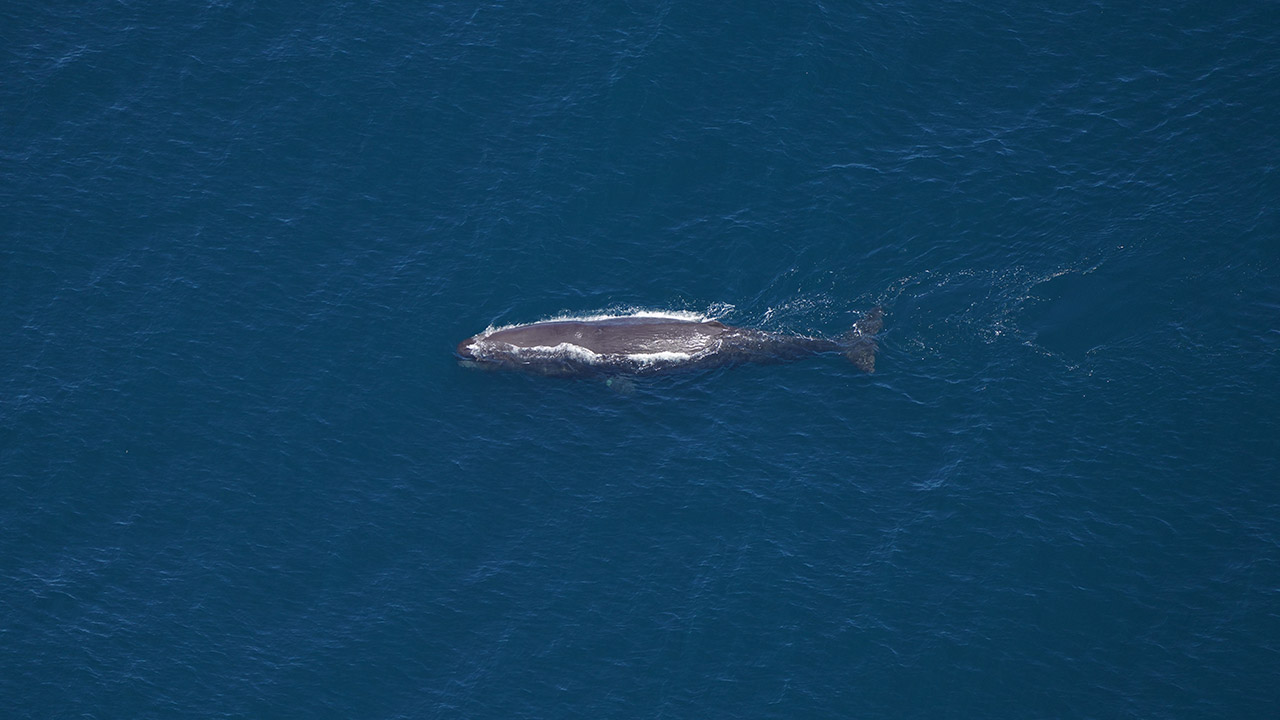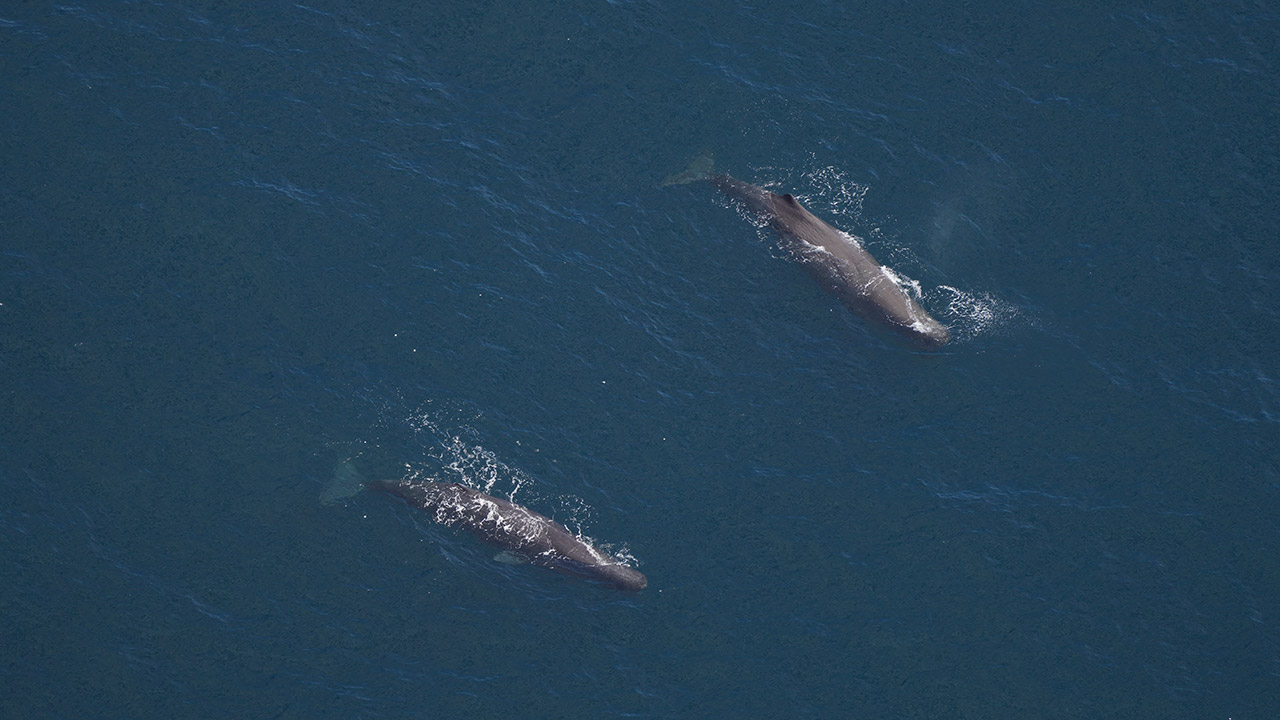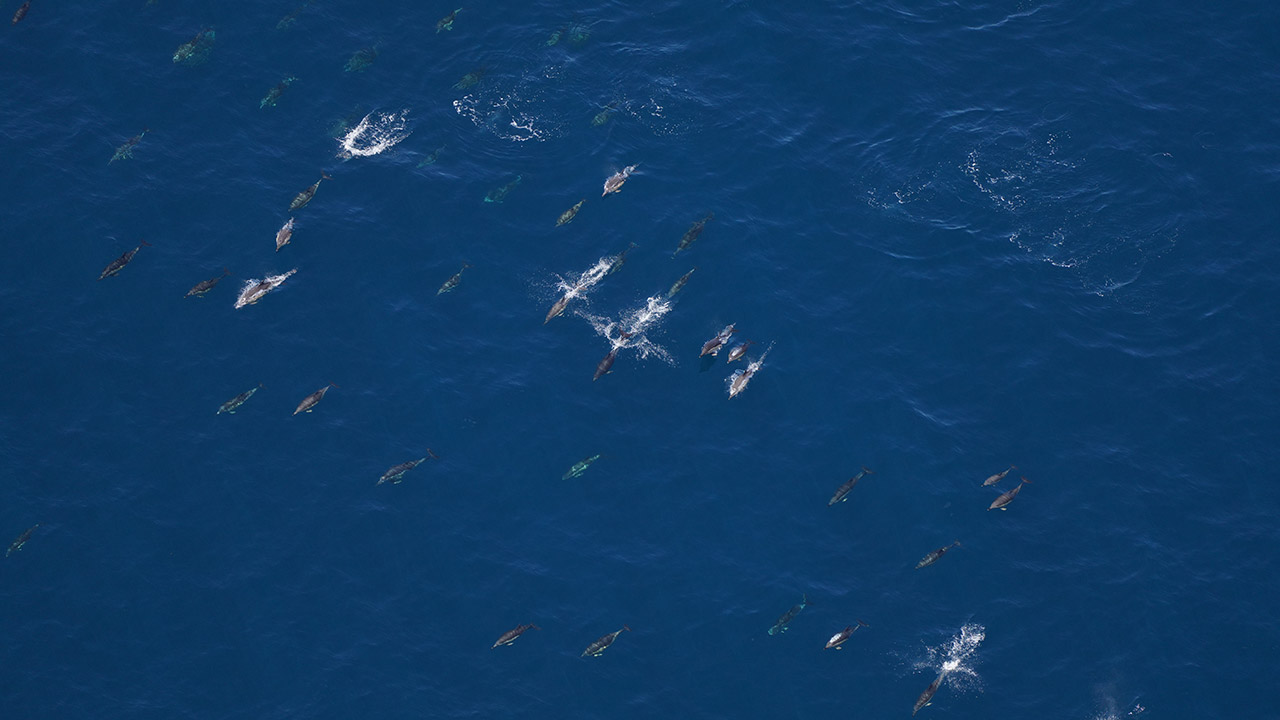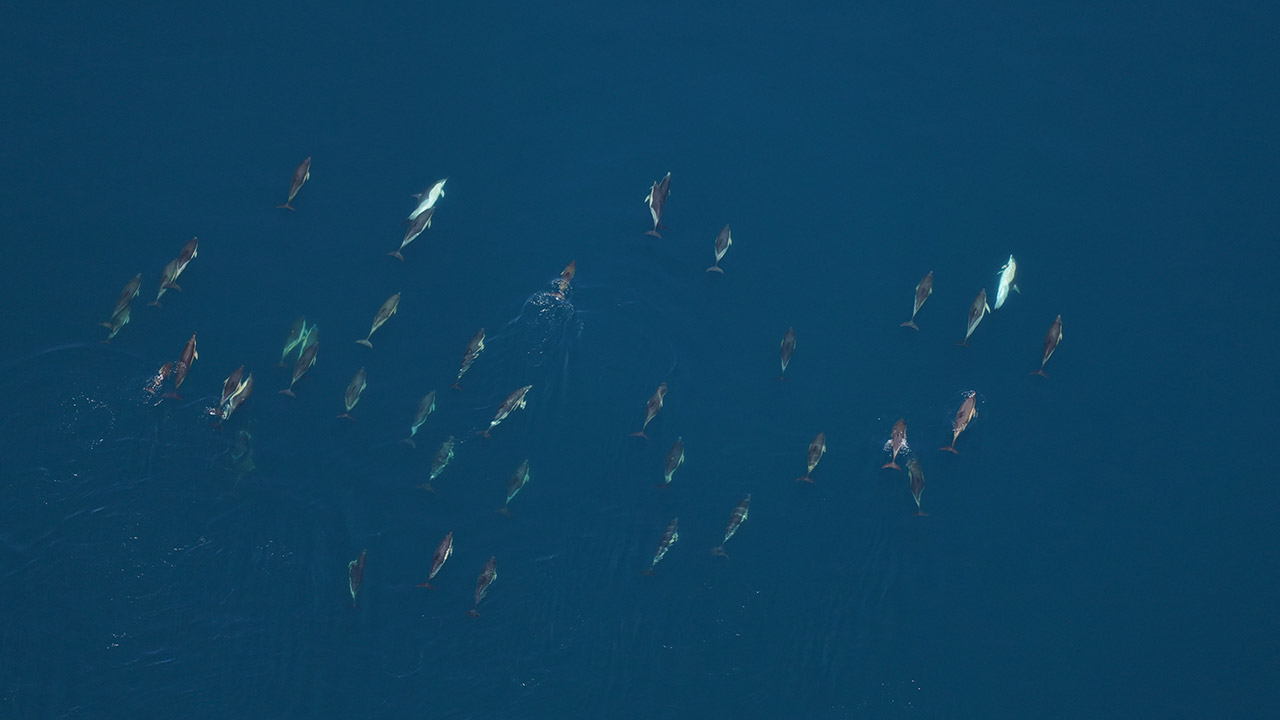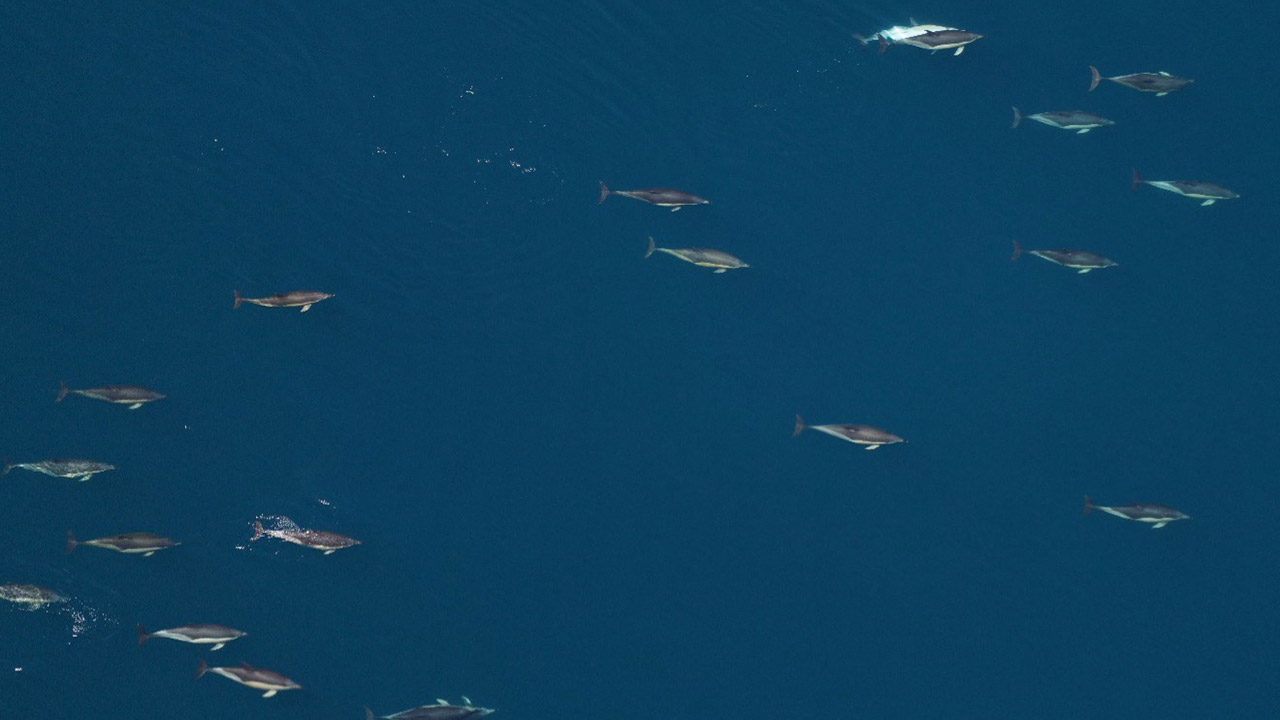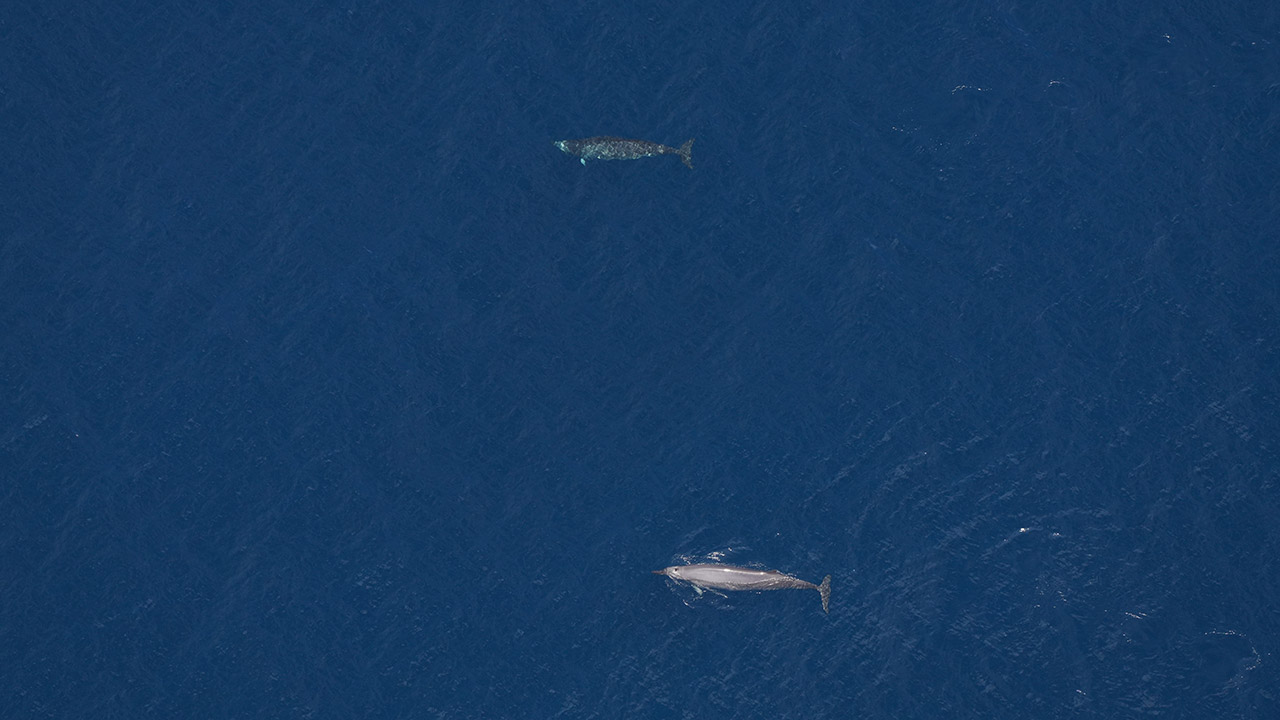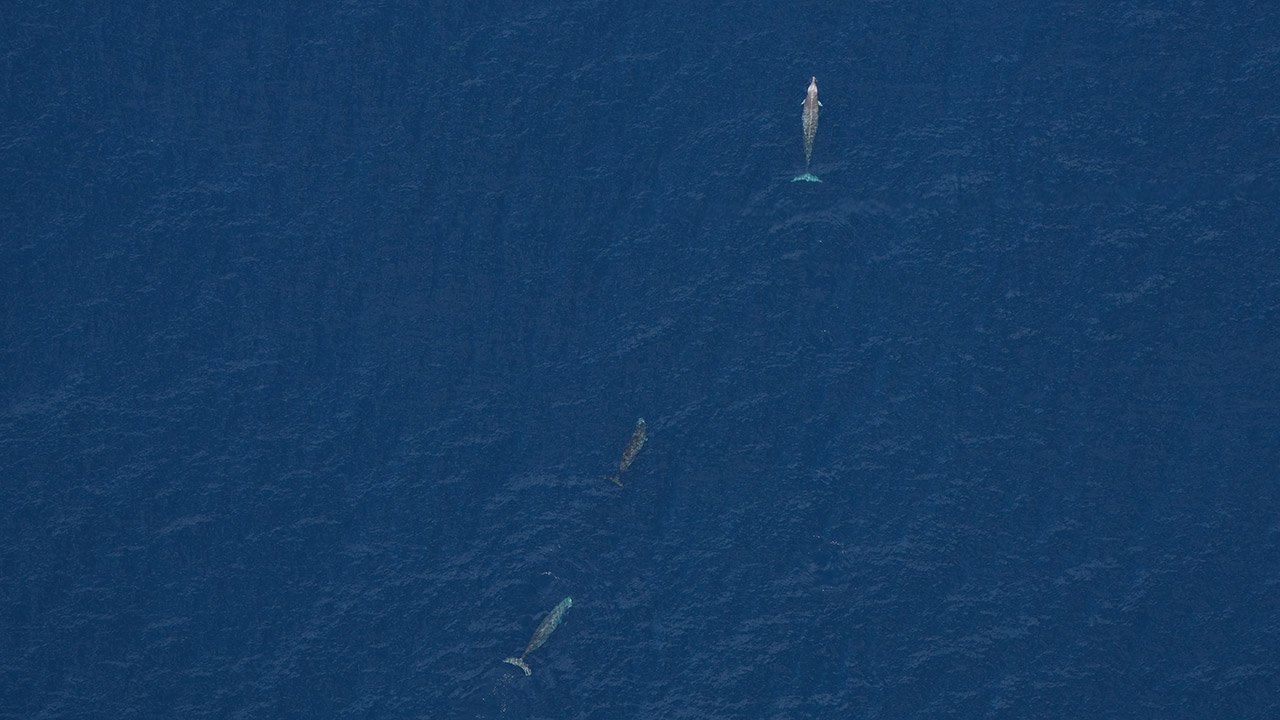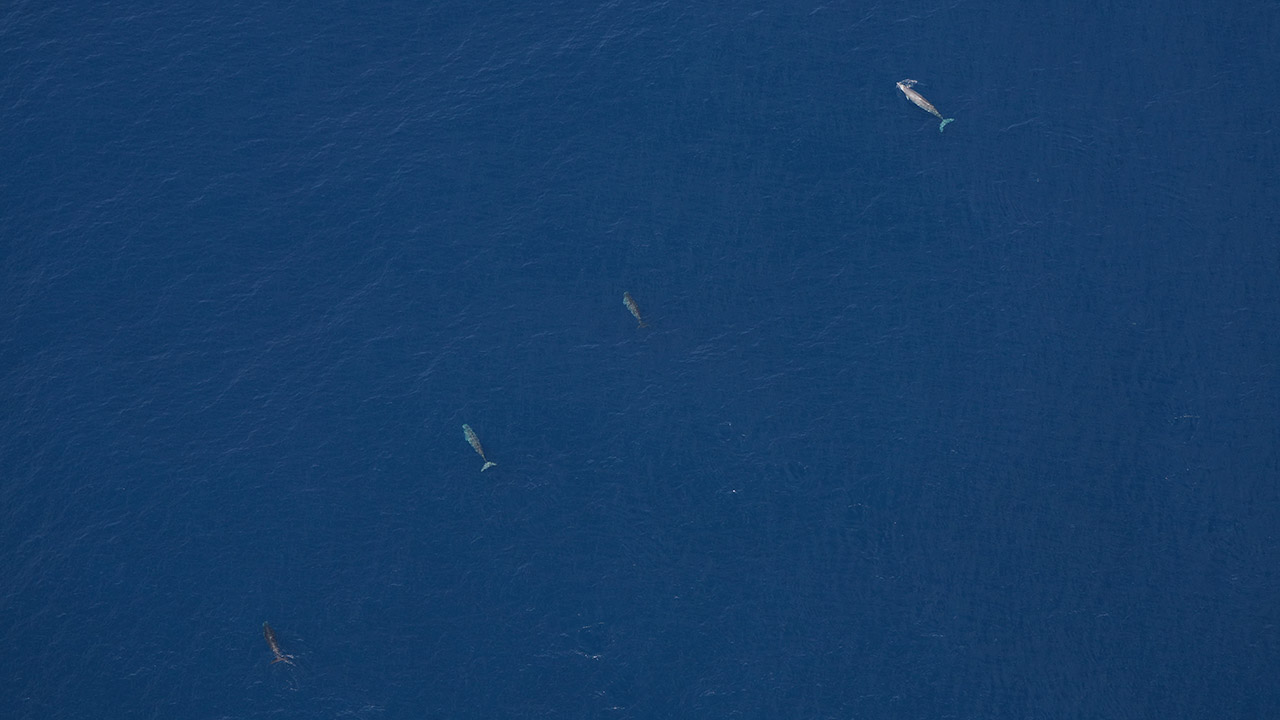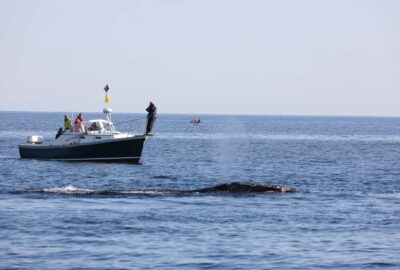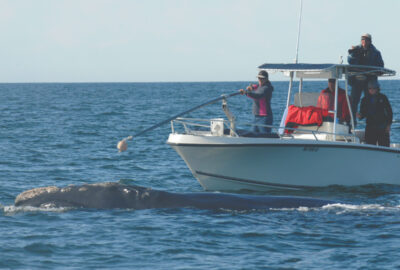Please note: We strongly recommend purchasing tickets online in advance to guarantee entry, as we do sell out on weekends.
June Sightings in the Marine National Monument
Our aerial survey team shares photos and facts from a recent survey over the Northeast Canyons and Seamounts Marine National Monument.
By Orla O’Brien on Monday, June 24, 2024

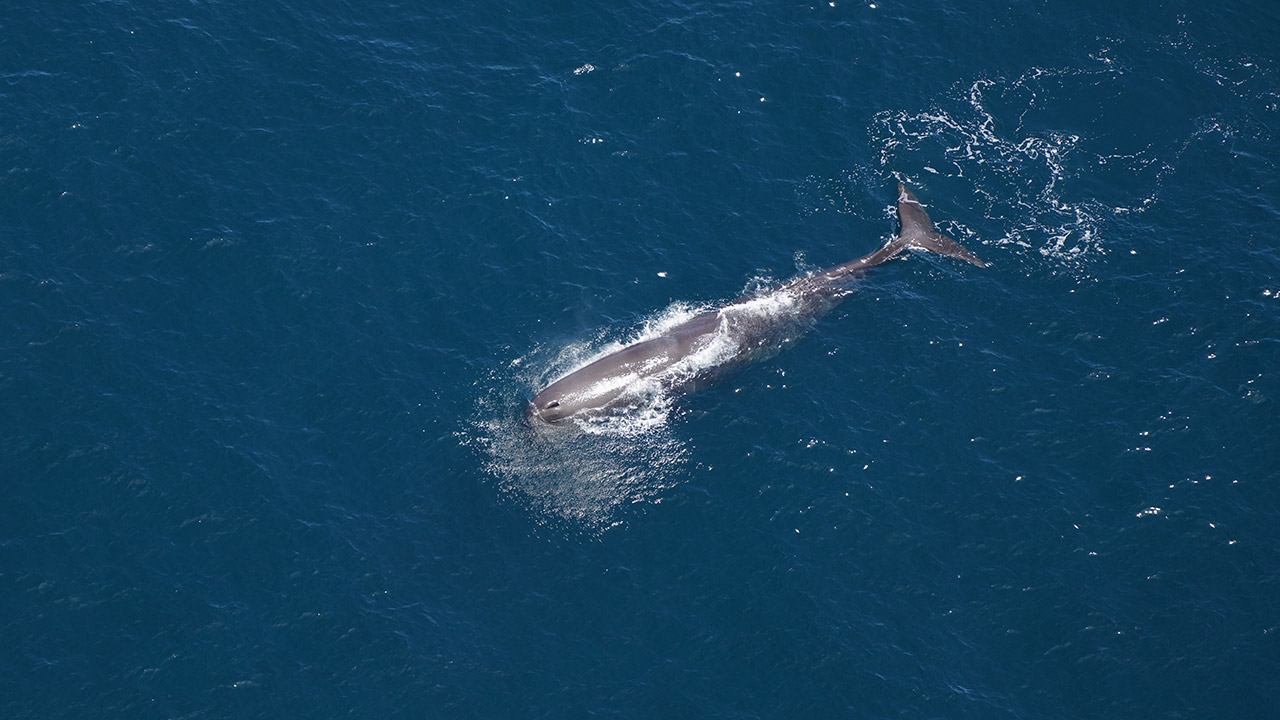
The aerial survey team at the Anderson Cabot Center for Ocean Life at the New England Aquarium has been flying surveys to the remote Northeast Canyons and Seamounts Marine National Monument since 2017. To fly these surveys, we travel 150 nautical miles southeast of Cape Cod.
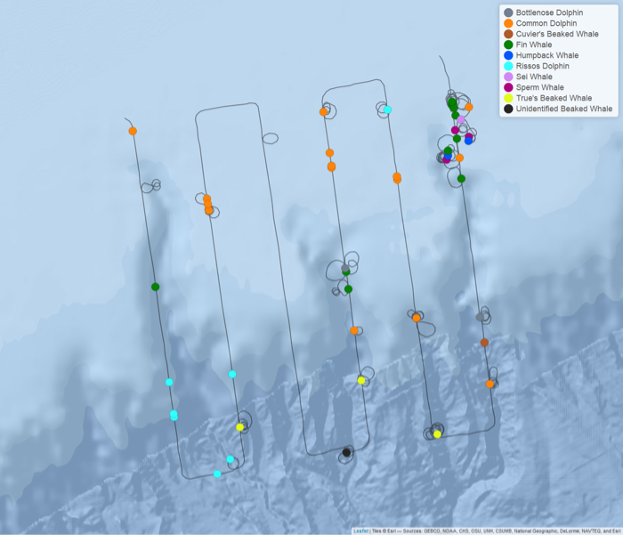
These flights are always special because the Monument is a hotspot for marine mammal diversity, and the surveys afford us the opportunity to see marine animals we don’t see closer to shore. Our team flew to the Monument on June 11 and saw a dazzling array of whales and dolphins!
In six short hours, we recorded 18 bottlenose dolphins (Tursiops truncatus), 768 common dolphins (Delphinus delphis), one Cuvier’s beaked whale (Ziphius cavirostris), 14 fin whales (Balaenoptera physalus), two humpback whales (Megaptera novaeangliae), 46 Risso’s dolphins (Grampus griseus), four sei whales (Balaenoptera borealis), four sperm whales (Physeter macrocephalus), and nine True’s beaked whales (Mesoplodon mirus). We also saw six basking sharks (Cetorhinus maximus), four blue sharks (Prionace glauca), and a whopping 163 ocean sunfish (Mola mola)!
We started off the survey by spotting a group of fin and sei whales surfacing in a small area— possibly indicating that they were feeding on something below the surface.
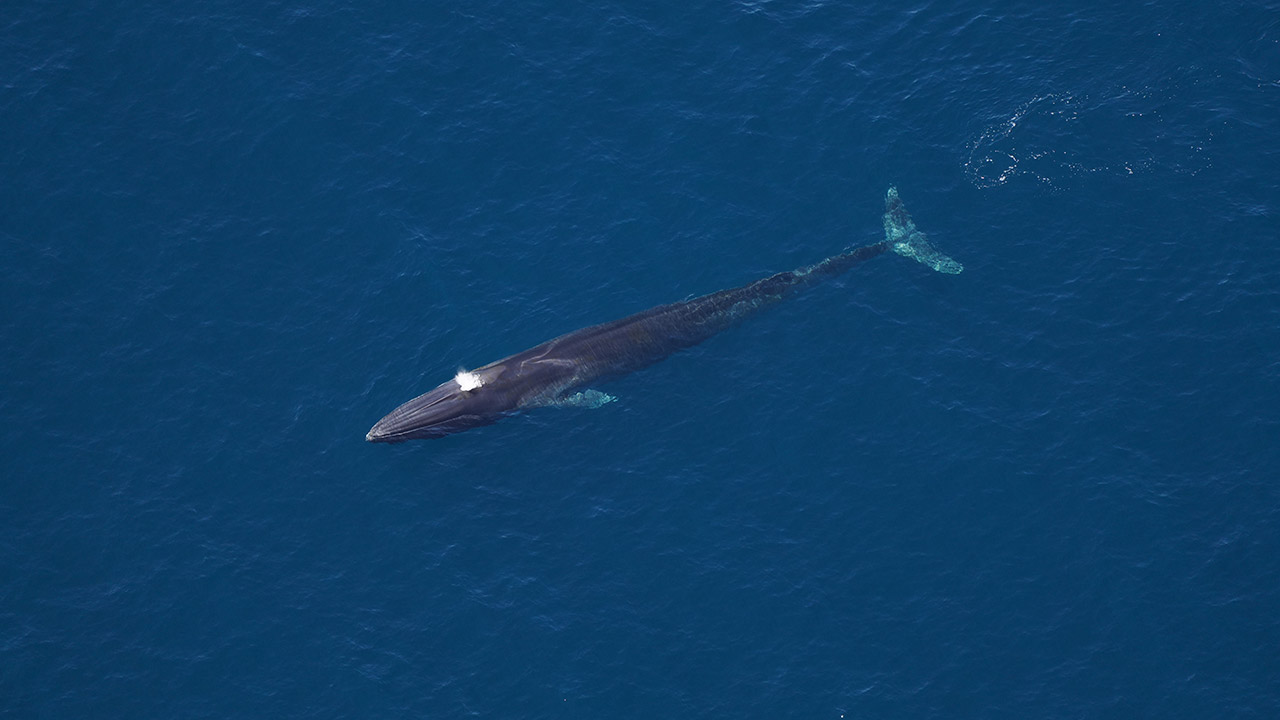
At about 70 feet long, fin whales are the second largest whale in the ocean (second to the blue whale, Balaenoptera musculus). Sei whales are their slightly smaller cousins and look very similar to fin whales, but are darker in coloration (fin whales distinctly have a pale lower right jaw), and have pointier dorsal fins and rostrums.
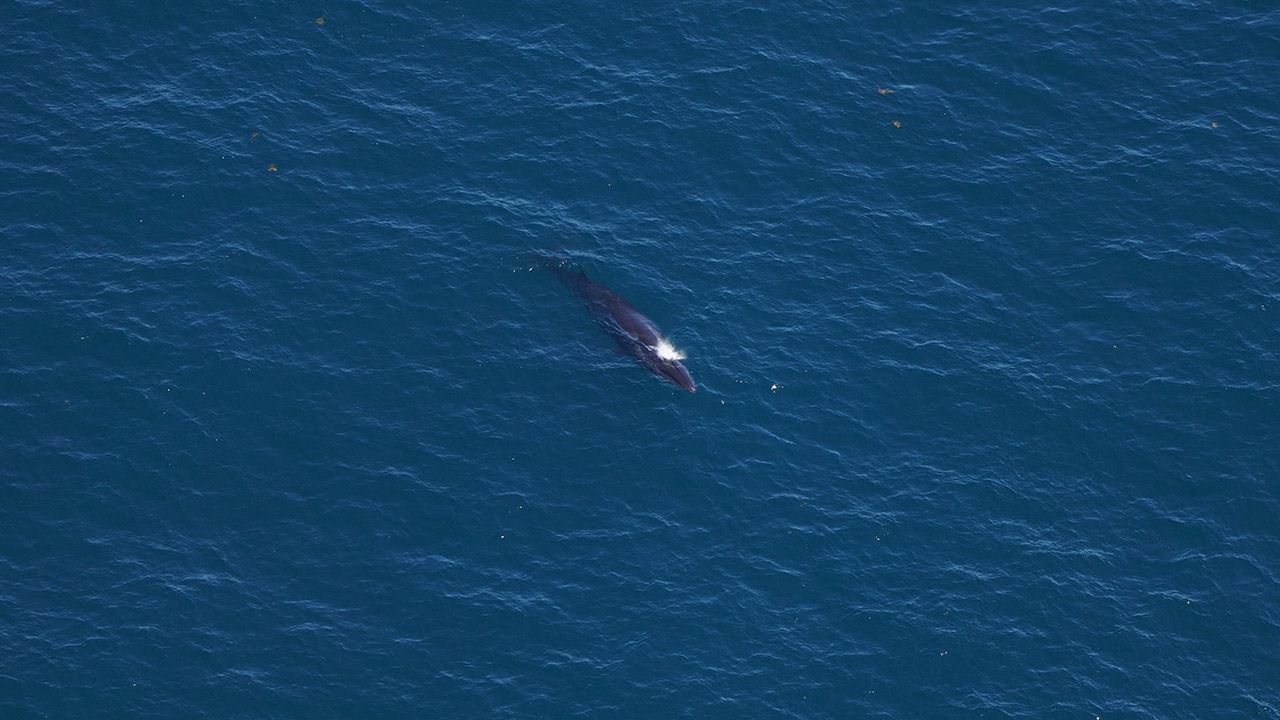
Just a few miles from the sei and fin whales, we saw four sperm whales—two single whales, and a pair. The pair of sperm whales was surrounded for a short time by a pod of common dolphins!
/
Sperm whales are the largest toothed whale in the ocean (the fin and sei whales we saw earlier are baleen whales, meaning they are filter feeders). Even though these toothed leviathans can reach 40–50 feet long, the small dolphins that swam by them were quite safe as sperm whales feed on squid and fish. They hunt in very deep water—they can dive as far as 10,000 feet under the surface—which makes the canyons in the Monument a perfect place to find them.
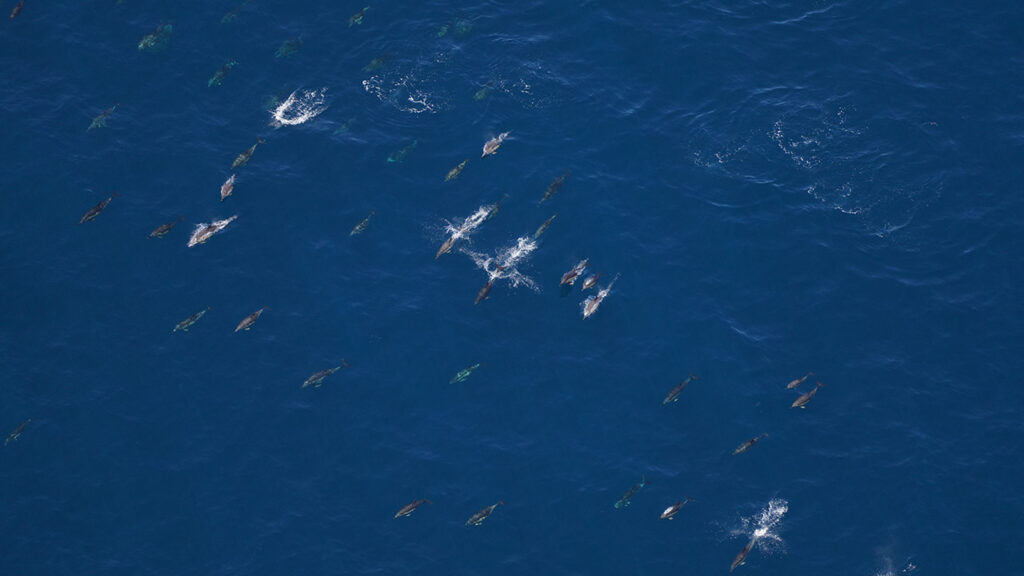
We try and choose days with great weather to fly in the Monument and, as our survey continued, the weather got better and better. We photographed bottlenose and common dolphins porpoising through the water, which is when they leap into the air periodically while swimming. It can be a technique to swim faster, and these dolphins seemed in a hurry to get somewhere!
The calm waters allowed us to take crystal clear photos of a pod of common dolphins. As our survey plane circled the dolphins to photograph them, it appeared as though they too were looking up at us!
/
Some of our favorite sights from the day were several groups of True’s beaked whales. Like the sperm whales, beaked whales make the three canyons of the Monument their home because they find their prey there: squid that live deep in the water column. Beaked whales have an unusual way of capturing their prey—they vacuum squid into their mouths in a process called suction feeding.
True’s beaked whales are often seen in small groups—we saw two groups of four whales, and one whale alone.
/
At the end of our survey, we flew home to process our data and look at our photos. We hope you enjoyed learning about what we saw!
Our aerial surveys of the Northeast Canyons and Seamounts Marine National Monument are currently supported by United States Fish and Wildlife Service.

